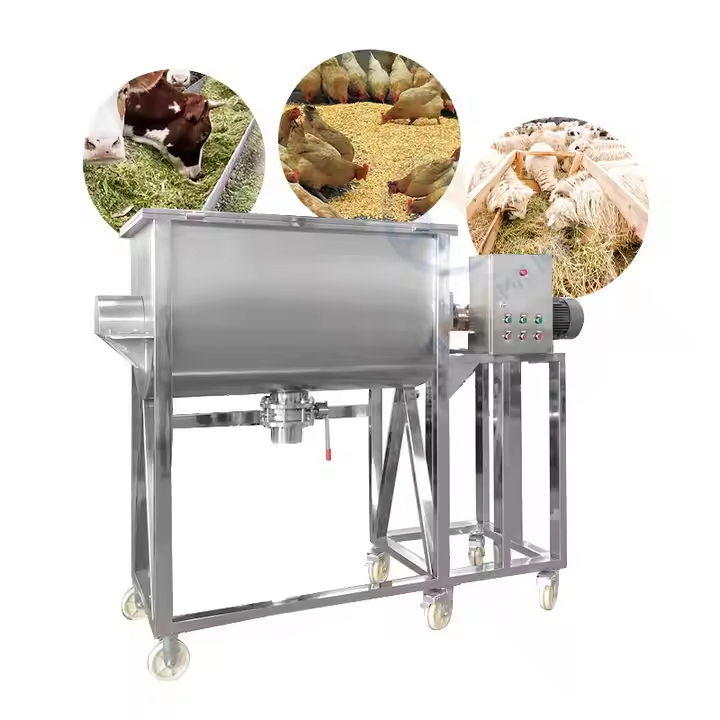
Poultry feed stirring mixers are crucial equipment for efficient and effective poultry feed production. These machines ensure a thorough blend of various ingredients, including grains, protein sources, vitamins, and minerals, to create a nutritionally balanced feed for chickens, ducks, pigs, cattle and other poultry.
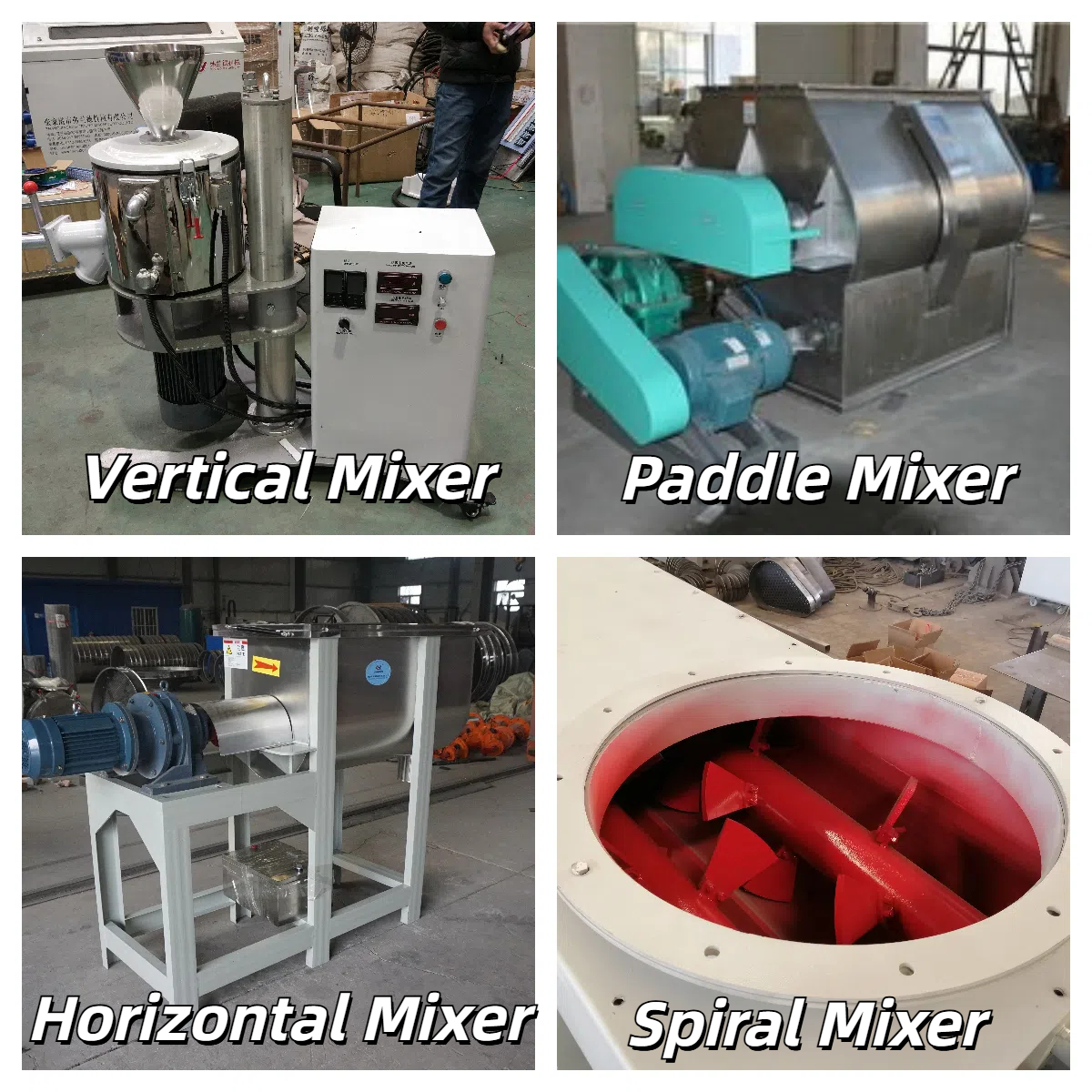
There are several types of poultry feed stirring mixers available on the market, each designed to meet different needs and scale of operations in poultry farming. Here are some common types of poultry feed stirring mixers:
Vertical Mixers: These mixers have a vertical design and are suitable for smaller to medium-sized poultry farms. They are efficient in mixing various feed ingredients such as grains, vitamins, minerals, and additives.
Horizontal Mixers: Horizontal mixers are typically larger and more heavy-duty, suitable for medium to large-scale poultry operations. They have a horizontal mixing chamber that allows for thorough blending of feed components.
Paddle Mixers: Paddle mixers have paddles or blades that rotate inside a mixing chamber to blend feed ingredients. They are versatile and can handle a wide range of feed formulations.
Spiral Mixers: Spiral mixers use a spiral mixing blade that rotates within a mixing chamber to create a thorough mixing action. They are suitable for both dry and wet feed ingredients.
Poultry feed stirring mixers can mix many different types of feed ingredients to ensure that poultry receive a balanced feed. Here are some common feed ingredients that can be mixed with poultry feed stirring mixers:
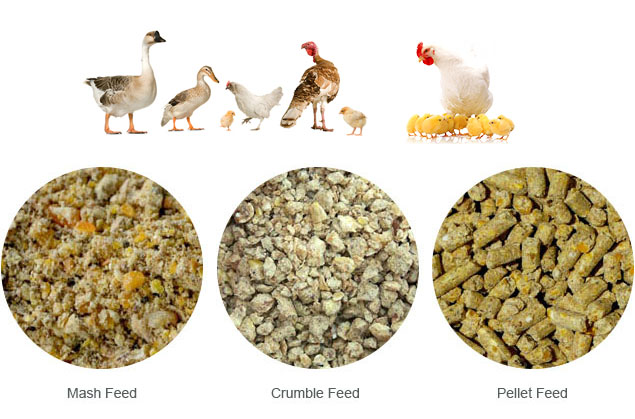
Grains: such as corn, wheat, rice, etc. Grains are usually the main source of energy in poultry feed.
Protein sources: including soybean meal, fish meal, bone meal, etc. These ingredients provide protein, which is necessary for poultry growth and maintenance of health.
Vitamins and minerals: such as vitamin A, vitamin D, phosphorus, calcium, etc. These nutrients play a key role in the growth, immune system and health of poultry.
Additives: such as amino acids, enzyme preparations, antibiotics, etc. These additives can help improve the nutritional value of feed and promote poultry growth and health.
Fats and oils: such as vegetable oils, animal fats, etc. Fats are one of the energy sources in poultry feed.
Fibers: such as silage, hay, etc. These ingredients can provide fiber and promote the digestive health of poultry.
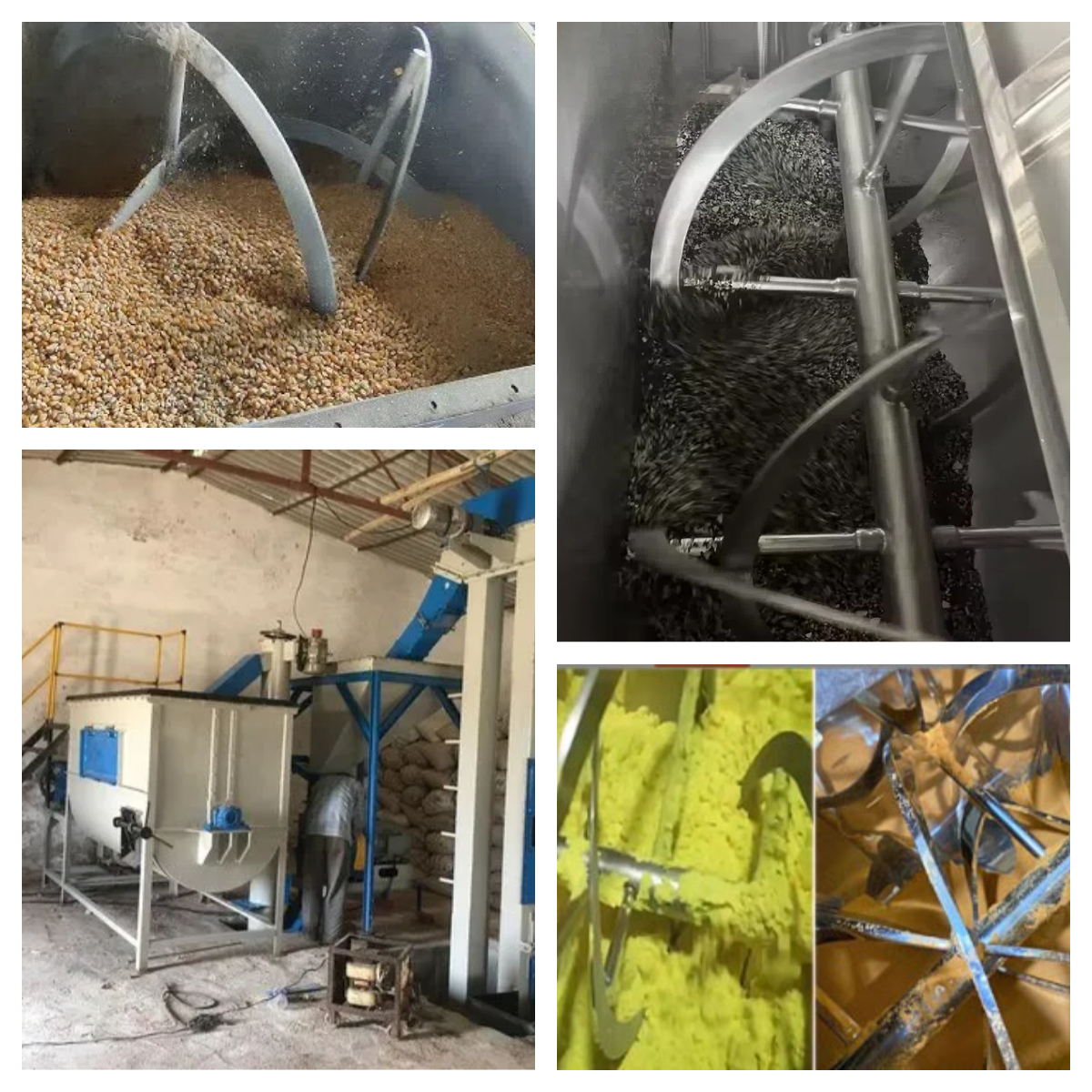
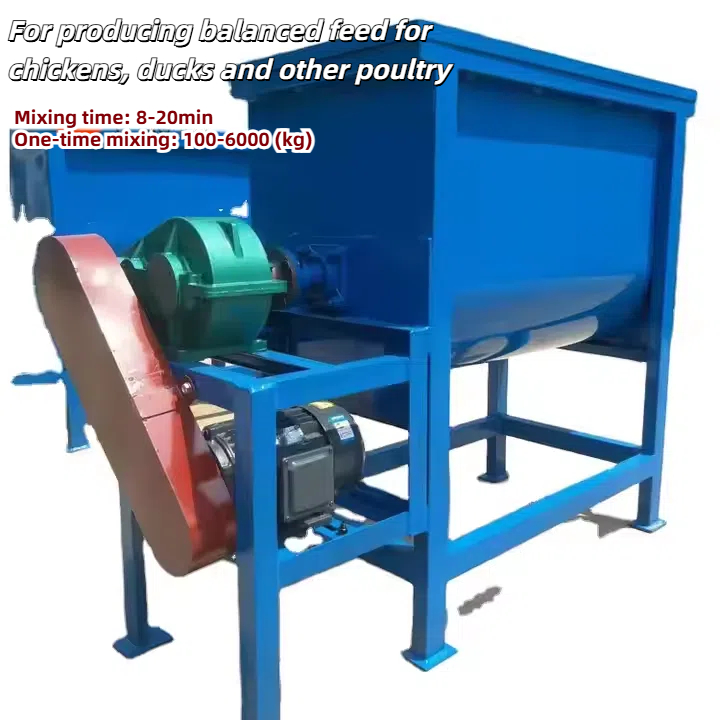
1. Even mixing: The mixer can evenly mix different types of feed ingredients to ensure that the nutrients in each portion of feed are evenly distributed, which helps to avoid selective feeding of poultry and improve feed utilization.
2. Customized formula: The mixer can customize different feed formulas as needed to meet the nutritional needs of poultry at different growth stages and production stages, which helps to improve the growth performance and egg production rate of poultry.
3. Save time and labor: The use of a mixer can quickly and efficiently mix a large number of feed ingredients, saving time and labor costs for manual mixing.
4. Reduce waste: By ensuring that the feed is evenly mixed, the mixer helps reduce the selective feeding of poultry on specific ingredients, reduces feed waste, and improves feed utilization.
5. Efficiency: Compared with traditional methods, it shortens the mixing time and improves overall productivity.

Production Capacity: The mixer's capacity should match your production needs.
Feed Formulation: The type of feed you produce will influence the required mixing intensity.
Ingredient Properties: The physical properties of the ingredients (e.g., particle size, moisture content) will affect the mixing process.
Mixing Time: The desired mixing time will impact the choice of mixer type.
Power Requirements: Ensure the mixer has sufficient power to handle the workload.
Maintenance Requirements: Consider the ease of cleaning and maintenance.
Cost: Evaluate the initial purchase cost and ongoing operating costs.
Address:China,Yanjin county forest park gate to the west 1000 meters north road.